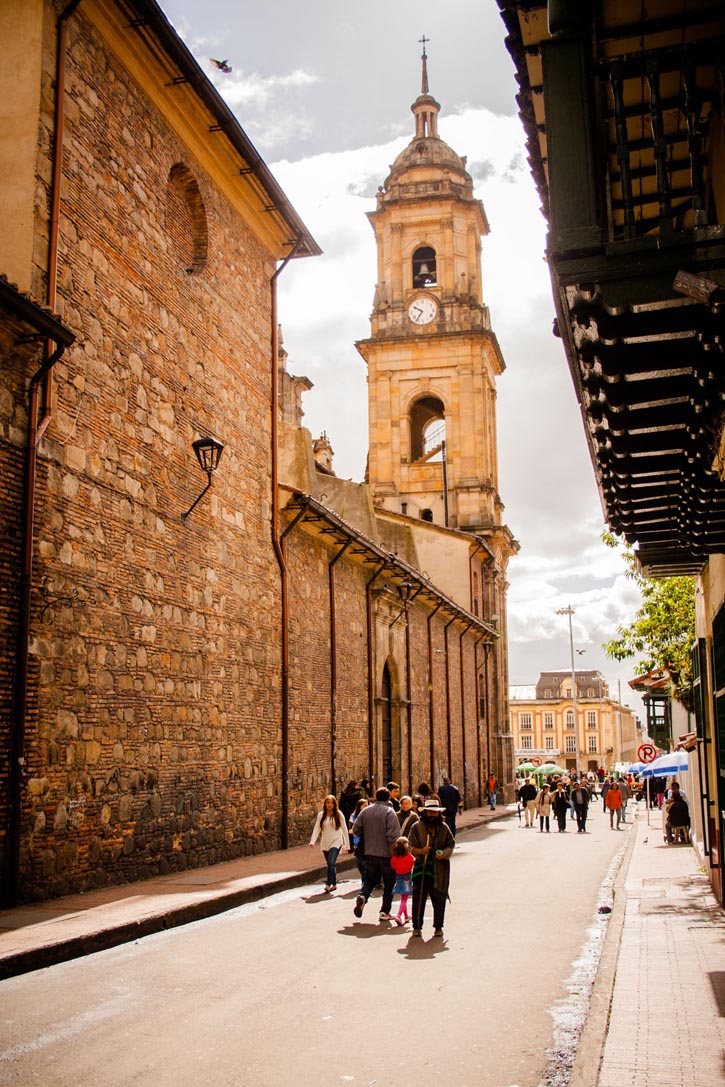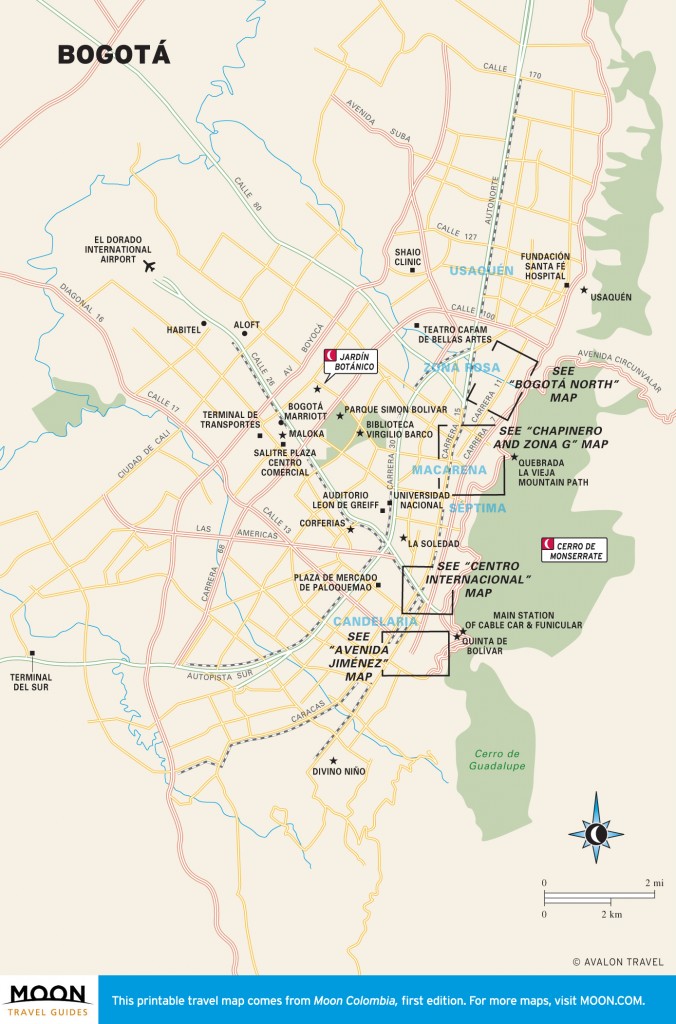Busy Bogotá is Colombia’s cool capital—and not just in terms of its famously chilly nights. A few years ago, visitors would arrive at the El Dorado airport and spend two days maximum in the Andean metropolis before taking the next flight to Cartagena. Now people are staying awhile, and it’s easy to see why.
This is the place to enjoy nouvelle Colombian cuisine, with flavors from the two coasts at a host of innovative restaurants.There is the Museo del Oro, of course, undoubtedly one of the best museums in Latin America. There are precious few reminders of the Muisca settlement of Bacatá in this vast concrete jungle of today, but this museum is a stellar tribute to a people who all but disappeared within decades of the Spanish conquest.Then there is the living museum that is the historic district, La Candelaria. Every street block has its unique story to tell: the flower vase that changed history, the loyal companion who saved the Liberator’s neck, the generosity of a famous painter. Colonial churches surprise with their quiet, steadfast beauty, and grandiose buildings along the Avenida Jiménez stand as testament to the aspirations of the “Athens of South America.” Red buses, glitzy shopping areas, and stunning libraries set in manicured parks are proof that Bogotá can, with a little investment and good government, overcome the formidable challenges of its recent past.

People walking alongside the Catedral Primada towards Plaza de Bolívar, the natural starting point for any tour of La Candelaria. Photo © Marcelo Rodriguez/123rf.
A melting pot of nearly eight million, Bogotá is home to Colombians from every corner of the country who come to study, seek opportunity, or crave the freedom and anonymity that this sprawling city of eight million offers. It shouldn’t come as a surprise that it is the country’s culinary and cultural capital as well. This is the place to enjoy nouvelle Colombian cuisine, with flavors from the two coasts at a host of innovative restaurants. It’s the place where there is always something going on—a massive theater festival, a symphony concert, a dance marathon courtesy of a big-name DJ, a gallery opening—it’s just a matter of finding out when and where. Bogotanos’ reputation for being gloomy and cerebral is unfair. You only need to experience the sheer alegría (joyfulness) of Andrés Carne de Res one weekend night for proof.
When the sensory overload and intensity of this over-caffeinated city becomes too much, the páramos (highland moors), cloud forests, and mountain lakes of extraordinary natural parks beckon. Parque Nacional Natural Chingaza, Parque Natural Chicaque, and Laguna de Guatavita are all only about an hour away.

Bogotá
At the minimum, give Bogotá two days. In that short time span, you can cover La Candelaria, head up to Monserrate, discover the Museo del Oro, and enjoy some good meals in the Zona T, Zona G, or the Macarena.
With about five days you can explore neighborhoods like the Macarena, check out the botanical gardens, or make a day trip to the Parque Natural Chicaque or to the Laguna de Guatavita. If you’re here over a Sunday, you’ll absolutely have to head out to the Ciclovía.
If you are staying in Colombia for 10 days, you can try a city-country combo by adding Villa de Leyva. Or make it a city-coast combo, adding a Caribbean Coast destination such as Cartagena or Santa Marta.
Many museums are closed on either Monday or Tuesday. The Museo del Oro is closed Mondays and the art museums of the Manzana Cultural are closed Tuesdays. During the end-of-year holidays and Holy Week (Semana Santa), Bogotá becomes a ghost town as locals head for the countryside, the coast, or abroad. There is very little traffic at those times, but many restaurants are closed and nightspots are empty, especially around Christmas. Bogotá is a particularly dull place to be on New Year’s Eve. Semana Santa is perhaps less lonely and can be a good time to visit, especially when the biennial theater festival is on. On long weekends, many Bogotanos skip town; those from the provinces come for a visit.
Excerpted from the First Edition of Moon Colombia.